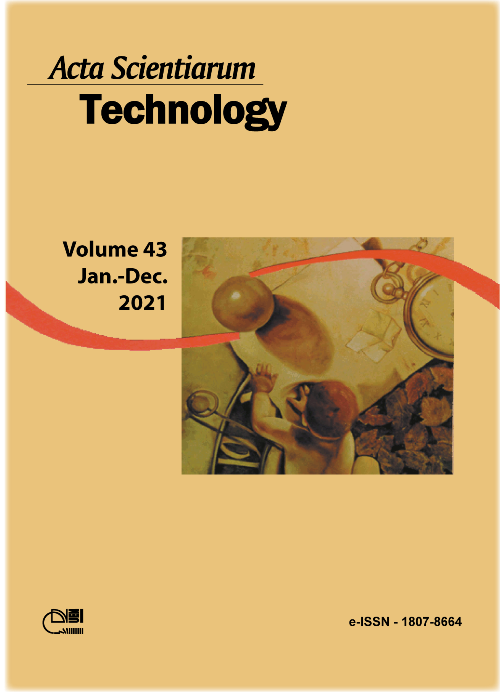Post-harvest quality of Campomanesia adamantium (Cambess.) O. Berg. in function of storage temperature
DOI:
https://doi.org/10.4025/actascitechnol.v43i1.48979Palavras-chave:
gabiroba, refrigeration, breath, cerrado, maturity stage, post-harvest conditions.Resumo
Brazil has a large variety of native and exotic fruit species, including the gabiroba, which can be sources of income for the population. The objective of this study was to evaluate the post-harvest behavior of gabiroba fruit by maturity stage and storage temperature. The fruits were divided into two lots and stored at temperatures of 6, 12, 24 and 30°C. The first batch was used for the physical and chemical analysis of acidity, soluble solids, firmness, percentage of green color, and visual analysis; this batch was composed of green and yellow-green fruit. The second lot was intended for breath analysis, composed of green, yellow-green, and yellow fruits. The experiment was conducted in a completely randomized design with five replications. Data were analyzed using descriptive statistics. Considering the evaluated characteristics, the gabiroba soluble solid/titratable acidity ratio values should be approximately 4.0 for the fruits to be considered acceptable for consumption. For the preservation of the post-harvest quality of gabiroba, it is indicated that the harvest is carried out at the green stage of maturation and that they are stored at a temperature of 6°C. The highest respiratory rates were observed in fruits harvested at the yellow stage, not being recommended its storage.
Downloads
Downloads
Publicado
Como Citar
Edição
Seção
Licença
DECLARAÇíO DE ORIGINALIDADE E DIREITOS AUTORAIS
Declaro que o presente artigo é original, não tendo sido submetido í publicação em qualquer outro periódico nacional ou internacional, quer seja em parte ou em sua totalidade.
Os direitos autorais pertencem exclusivamente aos autores. Os direitos de licenciamento utilizados pelo periódico é a licença Creative Commons Attribution 4.0 (CC BY 4.0): são permitidos o compartilhamento (cópia e distribuição do material em qualqer meio ou formato) e adaptação (remix, transformação e criação de material a partir do conteúdo assim licenciado para quaisquer fins, inclusive comerciais.
Recomenda-se a leitura desse link para maiores informações sobre o tema: fornecimento de créditos e referências de forma correta, entre outros detalhes cruciais para uso adequado do material licenciado.



















